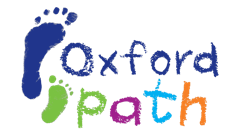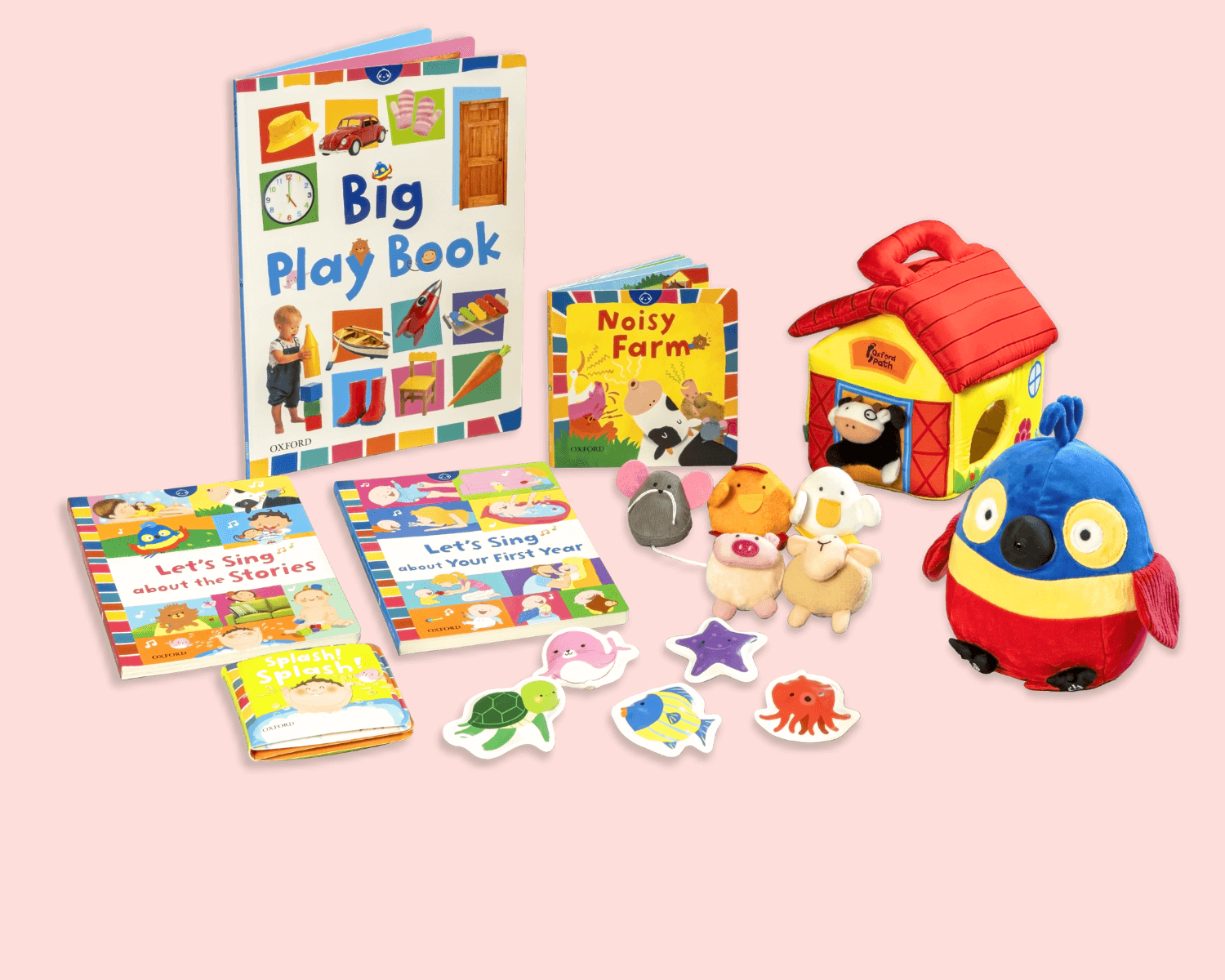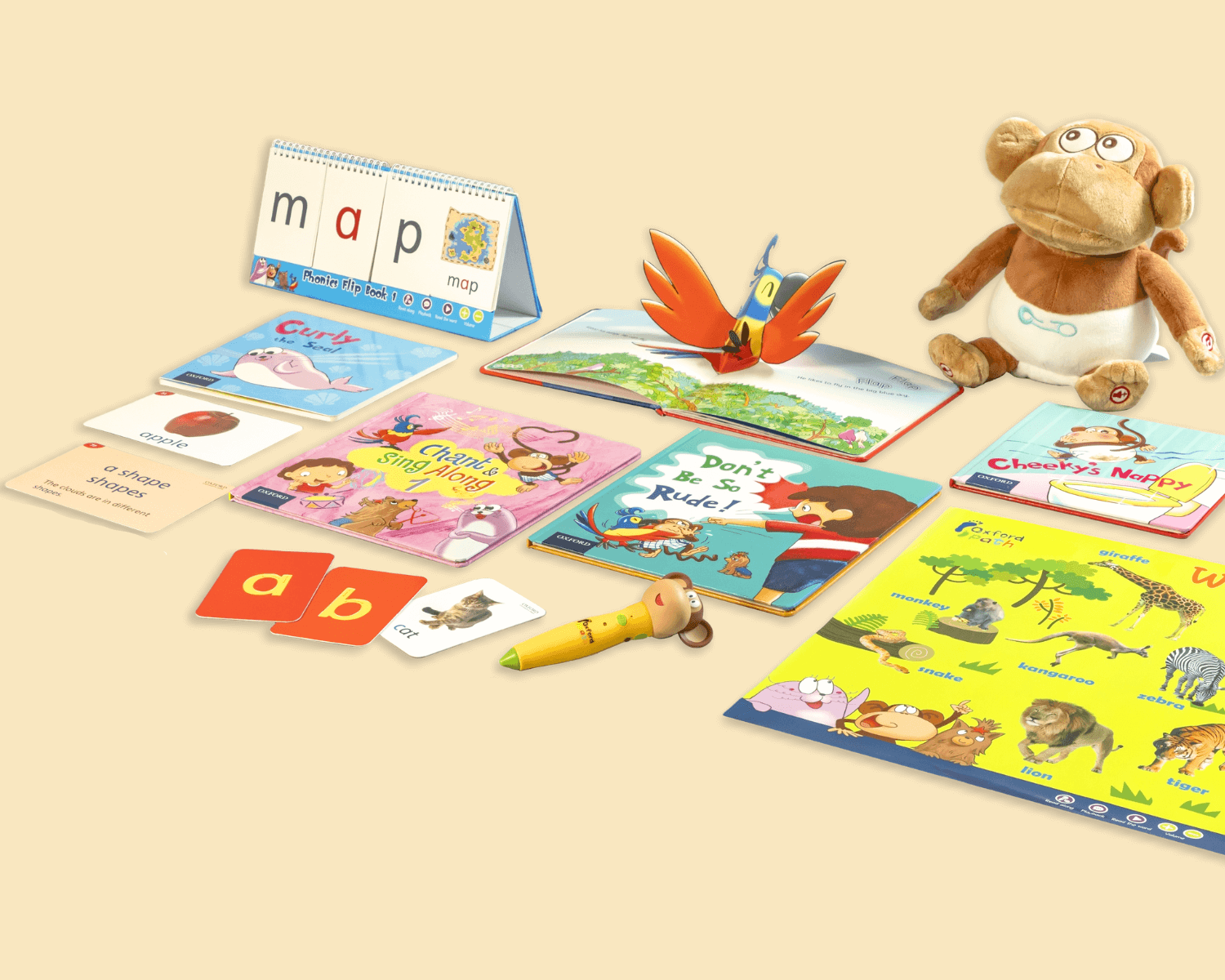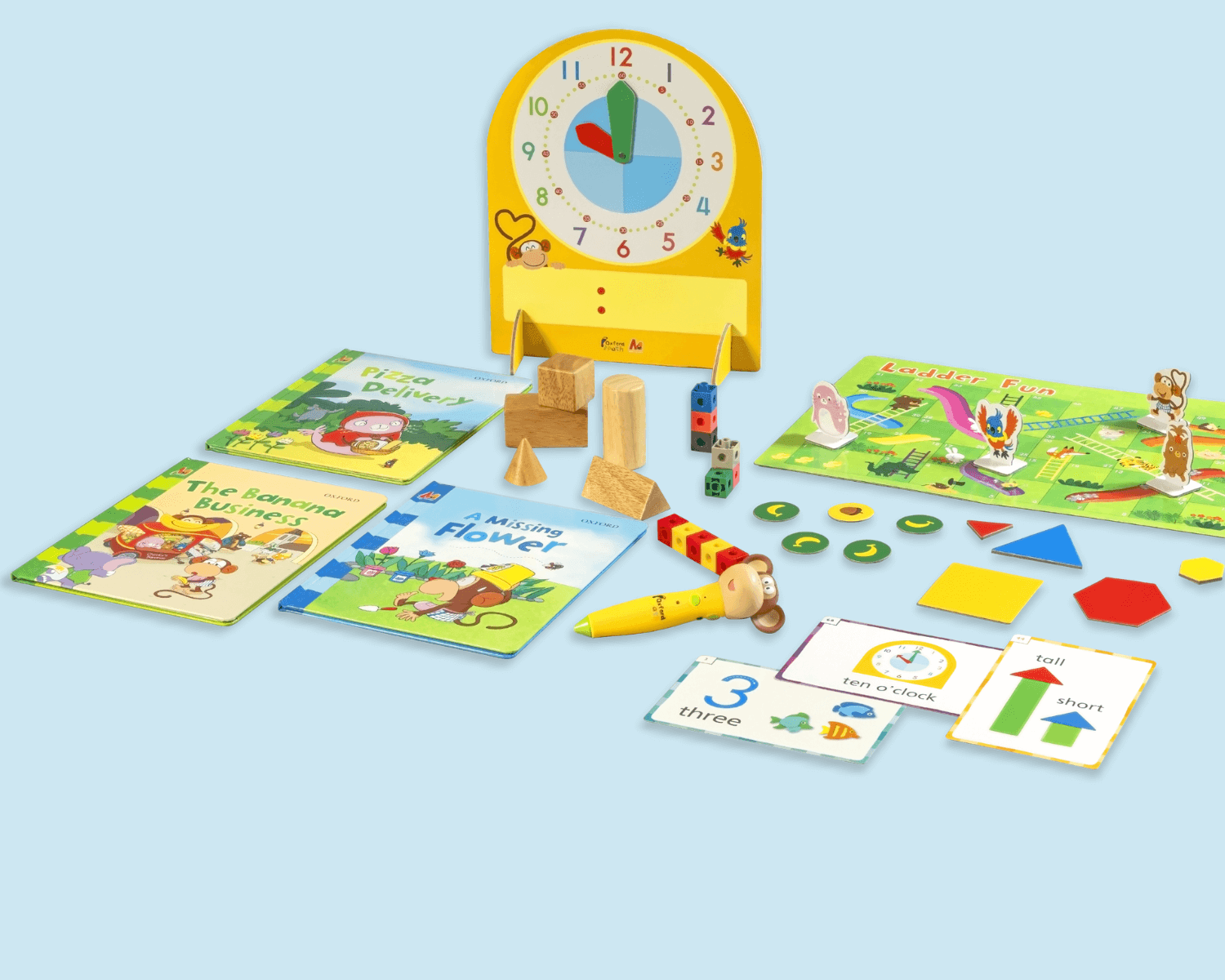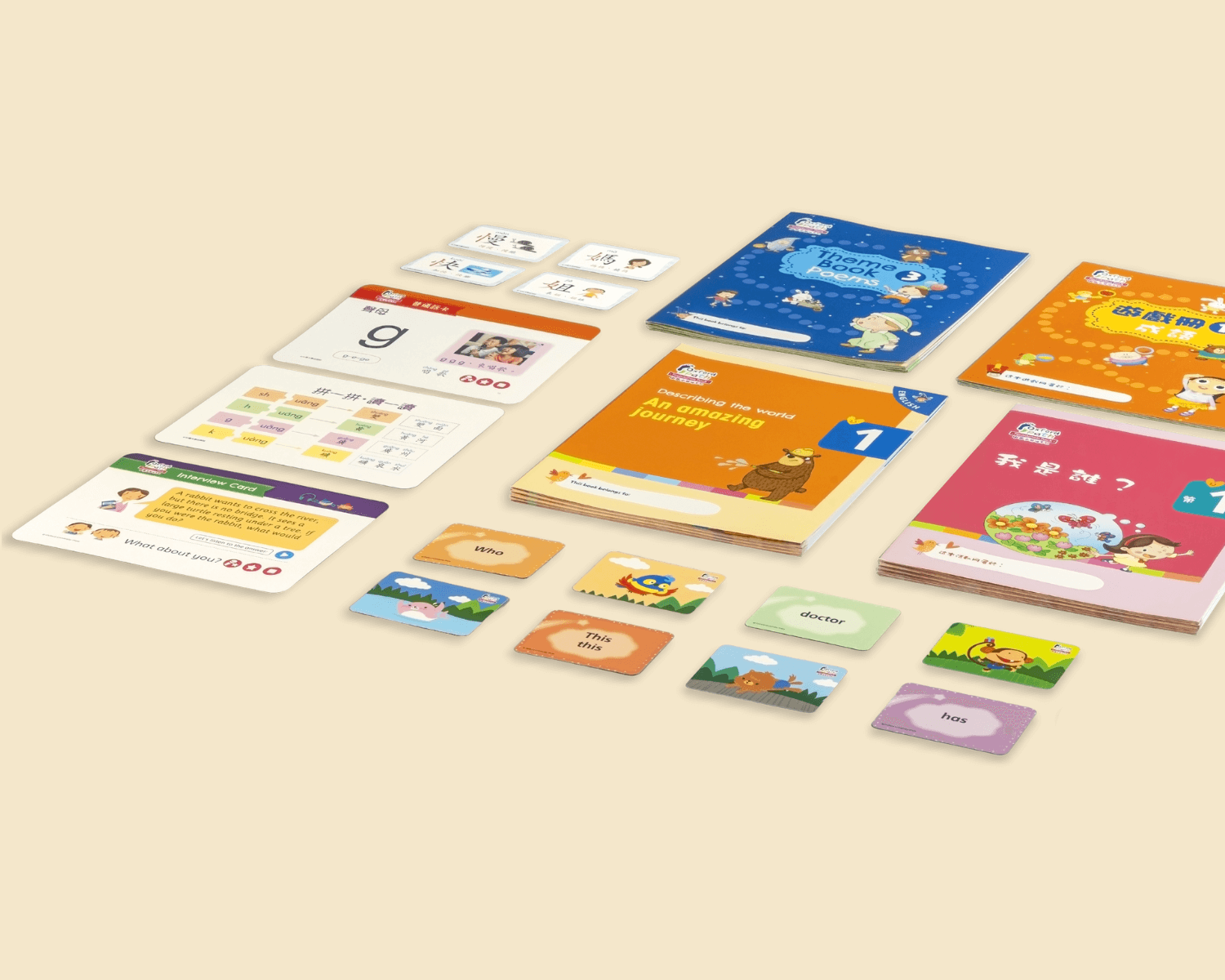Parent’s Myth

Early childhood education professionals point out that from birth to age 6, children have the fastest brain development. At just 3 years old, a child’s brain will be about 80% the size of an adult brain and it keeps growing to about 90% by 5. Besides, the growth of synapses that transmit signals to and from the brain peaks at 3. Every new experience will significantly increase the number of synapses, building an enormous network of information rapidly. Hence, an enriching and quality learning environment is important to stimulate a child’s intellectual and language development at this stage.
Parents should seize this critical period of language learning to unleash children’s potential by providing effective learning materials and stimulation that address their needs at different stages.
Click here to see how Oxford Path may help with the all-rounded development of your child during the critical period.
A healthy parent-child relationship makes your child feel safe and has a direct influence on his/her development and growth. Early childhood development experts reveal that children with a strong sense of security tend to have better brain and neural development, and perform better emotionally, mentally, physically, and socially. Children who have grown up with a stronger sense of security are keener to learn, solve problems and explore the world.
Working parents do not have time and may have identified ineffective materials and means to address children’s educational needs. Many recent studies show that the quality of parent-child activities matters much more than quantity. Quality interactions with children, such as storytelling, singing, dancing or small talks, for 15 to 30 minutes every day can make them feel loved and help build a closer and stronger bond.
With systematic and well-designed learning materials, such as thematic story books and educational toys, parents can interact with their children while teaching them valuable knowledge and skills in an interesting way.
Click here to learn about how Oxford Path can help you enjoy quality time with your child.
A child’s brain undergoes a rapid and important period of development before 3 years old. An enriching and healthy learning environment can stimulate the development of brain and learning ability. As young children usually stay at home, it is important to create an ideal environment for them to learn at home.
If you want to create a quality learning environment at home, you may refer to the suggestions below:
1. Diversified learning resources: A wide array of storybooks, toys and learning tools in different textures fit your child who learns through different senses.
2. Comprehensive learning content: A holistic learning experience should cover language, logical thinking, physical and moral education.
3. Systematic learning plan: You should provide learning resources and materials that match your child’s abilities and interests at different developmental stages.
4. Rich book collection: Thematic storybooks help your child acquire the knowledge and skills needed in daily life, relate himself/herself to the outer world.
5. Quality reading time: Read with your child for at least 20 minutes every day to develop a good reading habit.
Click here to see how Oxford Path may help you create an enriching and healthy learning environment at home.
Reading is a multi-sensory activity that involves different parts of the brain (e.g. the parts that control vision and hearing) and can effectively stimulate the connection of synapses for better brain development and growth.
Reading can also offer children a joyful and exciting experience through which they can acquire new knowledge and gain a better understanding of the world. Different types of stories and scenarios not only enable children to understand abstract concepts easily, but also help them develop empathy, learn positive values and foster positive attitudes and values.
Reading is the foundation of learning as it introduces children to the function of words, new vocabulary, grammar and sentence structures. Promoting their language and communication skills, reading will help them master writing skills too. In fact, children who can read well usually perform better academically, and are more confident and independent.
Meanwhile, reading can help children strengthen their attention span and memory, sharpen their analytical, critical-thinking and problem-solving skills, and stimulate their imagination and creativity.
Click here to see how our Oxford Path may help your child get into a good reading habit.
A child’s brain develops rapidly during the critical period of learning, and a systematic learning plan can help children build an extensive network of information and promote their higher-order thinking, which in turns will directly impact on their future academic performance.
You should consider a holistic and scaffolded learning system with sound pedagogy, well-designed learning tools with clear goals and content that match children’s abilities and needs at different stages. This can nurture children’s curiosity, and help them acquire the knowledge and skills needed in daily life. They can also learn social and communication skills, build positive attitudes and values. Meanwhile, the diversified learning tools also stimulate their senses, and allow them to apply what they have learnt in an interesting, interactive and effective manner.
All in all, a systematic learning pack can provide children with ideal and quality learning opportunities, helping them make the most of the golden learning period to path the way for lifelong learning.
Click here to see how Oxford Path as a systematic learning pack helps your child learn effectively.
Reading is essential to cultivating children’s self-learning ability, allowing them to explore new ideas, acquire new knowledge and skills, nurture curiosity and build confidence effectively. You may help your child develop good reading ability in three phases:
1. Get ready to read
Parents may read stories for newborn babies with colourful storybooks featuring multi-sensory elements to allow them to get familiar with the sound and rhythm of a language and experience the fun, helping them develop an interest in reading.
2. Learn to read
Parents may read stories related to everyday life and containing sight words, high-frequency words and simple conversations or sentence structures with their children. Going through the pictures before moving on to the texts will help them understand the stories and the relationship between words and meaning. With a basic vocabulary and some reading experience, they are ready for the phonics training that helps them build confidence in self-reading in the future.
3. Read to learn
Once children have mastered the basic reading and phonics skills, parents may choose storybooks with different topics based on their interests, such as environmental protection or helping the disadvantaged. Parents should encourage the children to read on their own first, and discuss the stories afterwards to inspire the young ones to learn and explore on their own, and develop compassion towards the world.
Click here to see how Oxford Path helps your child develop self-learning ability.
Early childhood education professionals point out that from birth to age 6, children have the fastest brain development. At just 3 years old, a child’s brain will be about 80% the size of an adult brain and it keeps growing to about 90% by 5. Besides, the growth of synapses that transmit signals to and from the brain peaks at 3. Every new experience will significantly increase the number of synapses, building an enormous network of information rapidly. Hence, an enriching and quality learning environment is important to stimulate a child’s intellectual and language development at this stage.
Parents should seize this critical period of language learning to unleash children’s potential by providing effective learning materials and stimulation that address their needs at different stages.
Click here to see how Oxford Path may help with the all-rounded development of your child during the critical period.
A child’s brain undergoes a rapid and important period of development before 3 years old. An enriching and healthy learning environment can stimulate the development of brain and learning ability. As young children usually stay at home, it is important to create an ideal environment for them to learn at home.
If you want to create a quality learning environment at home, you may refer to the suggestions below:
1. Diversified learning resources: A wide array of storybooks, toys and learning tools in different textures fit your child who learns through different senses.
2. Comprehensive learning content: A holistic learning experience should cover language, logical thinking, physical and moral education.
3. Systematic learning plan: You should provide learning resources and materials that match your child’s abilities and interests at different developmental stages.
4. Rich book collection: Thematic storybooks help your child acquire the knowledge and skills needed in daily life, relate himself/herself to the outer world.
5. Quality reading time: Read with your child for at least 20 minutes every day to develop a good reading habit.
Click here to see how Oxford Path may help you create an enriching and healthy learning environment at home.
A child’s brain develops rapidly during the critical period of learning, and a systematic learning plan can help children build an extensive network of information and promote their higher-order thinking, which in turns will directly impact on their future academic performance.
You should consider a holistic and scaffolded learning system with sound pedagogy, well-designed learning tools with clear goals and content that match children’s abilities and needs at different stages. This can nurture children’s curiosity, and help them acquire the knowledge and skills needed in daily life. They can also learn social and communication skills, build positive attitudes and values. Meanwhile, the diversified learning tools also stimulate their senses, and allow them to apply what they have learnt in an interesting, interactive and effective manner.
All in all, a systematic learning pack can provide children with ideal and quality learning opportunities, helping them make the most of the golden learning period to path the way for lifelong learning.
Click here to see how Oxford Path as a systematic learning pack helps your child learn effectively.
A healthy parent-child relationship makes your child feel safe and has a direct influence on his/her development and growth. Early childhood development experts reveal that children with a strong sense of security tend to have better brain and neural development, and perform better emotionally, mentally, physically, and socially. Children who have grown up with a stronger sense of security are keener to learn, solve problems and explore the world.
Working parents do not have time and may have identified ineffective materials and means to address children’s educational needs. Many recent studies show that the quality of parent-child activities matters much more than quantity. Quality interactions with children, such as storytelling, singing, dancing or small talks, for 15 to 30 minutes every day can make them feel loved and help build a closer and stronger bond.
With systematic and well-designed learning materials, such as thematic story books and educational toys, parents can interact with their children while teaching them valuable knowledge and skills in an interesting way.
Click here to learn about how Oxford Path can help you enjoy quality time with your child.
Reading is a multi-sensory activity that involves different parts of the brain (e.g. the parts that control vision and hearing) and can effectively stimulate the connection of synapses for better brain development and growth.
Reading can also offer children a joyful and exciting experience through which they can acquire new knowledge and gain a better understanding of the world. Different types of stories and scenarios not only enable children to understand abstract concepts easily, but also help them develop empathy, learn positive values and foster positive attitudes and values.
Reading is the foundation of learning as it introduces children to the function of words, new vocabulary, grammar and sentence structures. Promoting their language and communication skills, reading will help them master writing skills too. In fact, children who can read well usually perform better academically, and are more confident and independent.
Meanwhile, reading can help children strengthen their attention span and memory, sharpen their analytical, critical-thinking and problem-solving skills, and stimulate their imagination and creativity.
Click here to see how our Oxford Path may help your child get into a good reading habit.
Reading is essential to cultivating children’s self-learning ability, allowing them to explore new ideas, acquire new knowledge and skills, nurture curiosity and build confidence effectively. You may help your child develop good reading ability in three phases:
1. Get ready to read
Parents may read stories for newborn babies with colourful storybooks featuring multi-sensory elements to allow them to get familiar with the sound and rhythm of a language and experience the fun, helping them develop an interest in reading.
2. Learn to read
Parents may read stories related to everyday life and containing sight words, high-frequency words and simple conversations or sentence structures with their children. Going through the pictures before moving on to the texts will help them understand the stories and the relationship between words and meaning. With a basic vocabulary and some reading experience, they are ready for the phonics training that helps them build confidence in self-reading in the future.
3. Read to learn
Once children have mastered the basic reading and phonics skills, parents may choose storybooks with different topics based on their interests, such as environmental protection or helping the disadvantaged. Parents should encourage the children to read on their own first, and discuss the stories afterwards to inspire the young ones to learn and explore on their own, and develop compassion towards the world.
Click here to see how Oxford Path helps your child develop self-learning ability.


